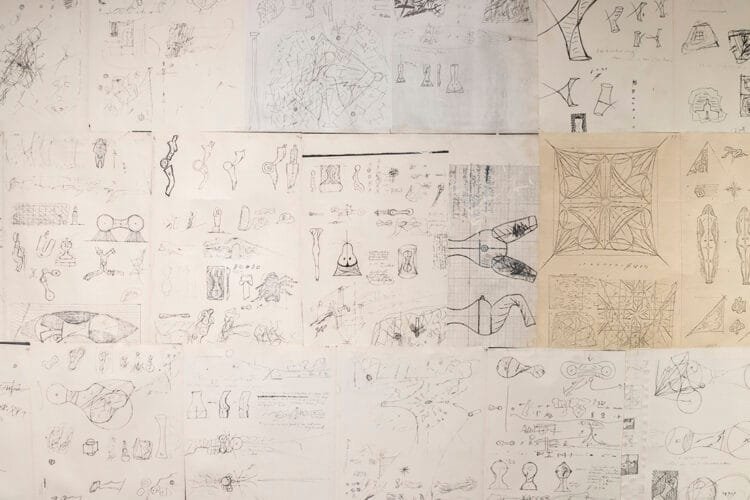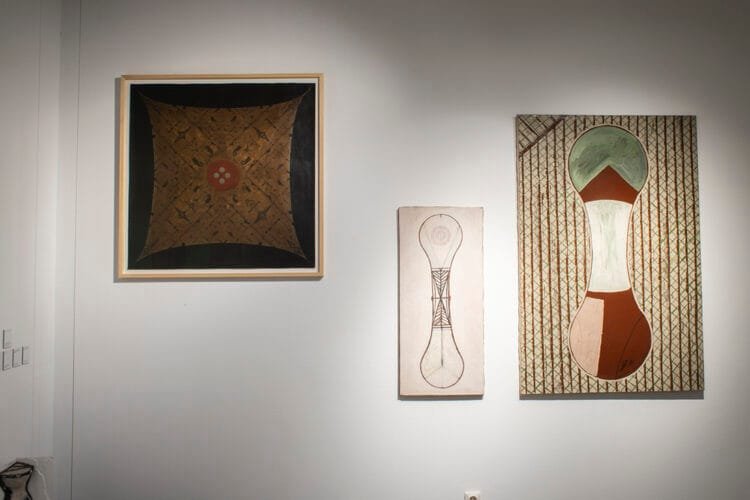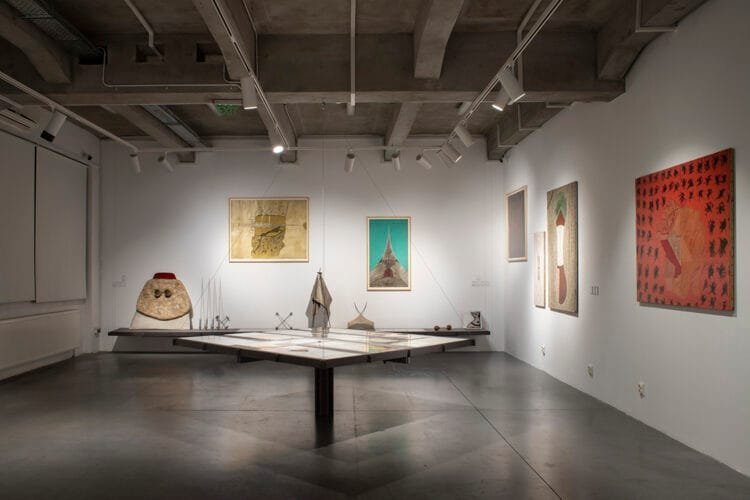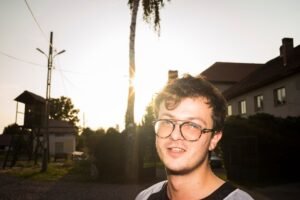Matter takes on different temperatures and consistencies in “Horia Bernea. Essay on Space” exhibition at Salonul de proiecte. The exhibition is a manifestation of the concepts that articulated Bernea’s thinking and representations in his drawings, paintings and objects. These concepts, called “entities”, are not without a certain level of hermeticism and explode in the artist’s more intimate creation in the second half of the 1960s and the first half of the ‘70s. This is the sprezzatura that combines the careful observation of reality, of the landscape (“The best painting is made in one breath, because it means a knowledge of the subject. […] Speed comes as a supreme crowning of a long effort.”), with his concerns of science and the sensibilities of the time, which merge towards an area of ambiguous and intuitive forms and meanings.
A sizeable element in the exhibition is a kind of “wallpaper”, discovered more recently (in 2023), a compact block formed of xerox copies of drawings from Bernea’s notebooks, in which he elaborates his thinking on what he calls “entities”. The “entities” are, as the artist himself notes in his essay A Kind of Disorder (1970–1973):
“H.P.U. (Shoulder Bell) — place, hierarchy, uniqueness, closed object;
Brarb — realm going from rigor to approximation, anthropomorphic, symmetrical, uniqueness;
Verg — vectoriality, ambiguity, uniqueness, tendency to become an open object;
Stroaeuge — ambiguity, strangeness, uniqueness, anecdotic note of anthropomorphism; Mucarfa — informal, structure conflict, open object (indefinite fragment).”
On this “wallpaper” matter goes from molecular to the recomposition of bodies or perhaps their disintegration in “trace”, from the possible suggestion of protozoa to the architecture of the church in Densuș. From focus to something general, the female body begins to resemble a diagram, elaborate and whimsical physical processes become sketches for elaborate SF illustrations.
The “entities” in the notebooks become, with different variations, objects and paintings. The crossing, and in an even more explicit form, the cross, becomes the association of different terminologies to create new concepts-situations. One of these is the idea of the “weak place”: the penetration or, as the case may be, the simple interaction between a gestural and organic entity, disorganised, by a “rigorous”, geometrised, technical object. A “weak place” also appears in the composition titled Penetroscop, in which opposite qualities, passionate, disorganised, merge with impersonal, rigorous. Brarb is symmetrical on the “wallpaper” and reproduces the same approximate qualities, it becomes a less altered and larger three-dimensional object, and also in three-dimensional form it can take on a “corner” variant, in which the symmetry is broken, perhaps even mutilated.
However, the process can also have another path: from the created object, to a two-dimensional form, as in the case of the Flags (suggestion of stretched skin, a term that can define the membrane that covers internal organs, but also the church flag). Spears crossed through a support made of tubes that stretch the “skin” and, in another form, spears that support the “flag skin” like an umbrella. The objects are photographed in the Șelari street studio over the mess of newspapers and elements in the space (Mucarfa, for example), raising the “temperature” of the creation. The flag reiterates the cross in obvious and subtle ways, both as the obsession of a form or a crossing of states, and as a (subversive, even) suggestion of Christianity. At the same time, the painted flag can acquire several materialities: from a peasant textile object to stretched skin, to the inclusion of several beings with suggested faces.
In Bernea’s paintings, the surface is delimited in precise, sometimes chaotic ways, and the artist’s motifs combine with indescribable situations. Sometimes scribbled graphs (an irony against the much-circulated and inflated statistics of communism) share the same canvas with seemingly meaningless brushstrokes, but also with organic, vegetal or molecular forms. The surface of the canvas leaves room for experiments with different degrees of control of the reaction between a layer of industrial paint for metal surfaces with a superimposed layer of oils, from the “tearing” of whose skin new shapes and traces emerge.
This abstract composite of visual situations, of “entities”, is reconfigured over the years in the artist’s mature series as reconstructions of the deconstructed reality in the present exhibition: “verg” becomes a hill, “dumbbell” becomes a column, “mucarfa” becomes a garden, etc. Beyond the metamorphoses, some of the compositional principles are preserved, whether it is axiality, the idea of symmetry, double symmetry, quadruple symmetry, centrality or simply the exploration of an “ineffable principle, difficult to articulate and all the more valuable the more difficult it is to articulate”. The exhibition contributes to a translation of this principle.
“Horia Bernea. Essay on Space”. Exhibition conceived by Salonul de proiecte in collaboration with Anca Oroveanu [Salonul de proiecte, Bucharest, 25.09–02.11.2025].
POSTED BY
Bogdan Balan
Bogdan Bălan is a cultural journalist, art critic and cultural worker. He has collaborated with Goethe-Institut, Savvy Contemporary, Scena9, among others....










Comments are closed here.